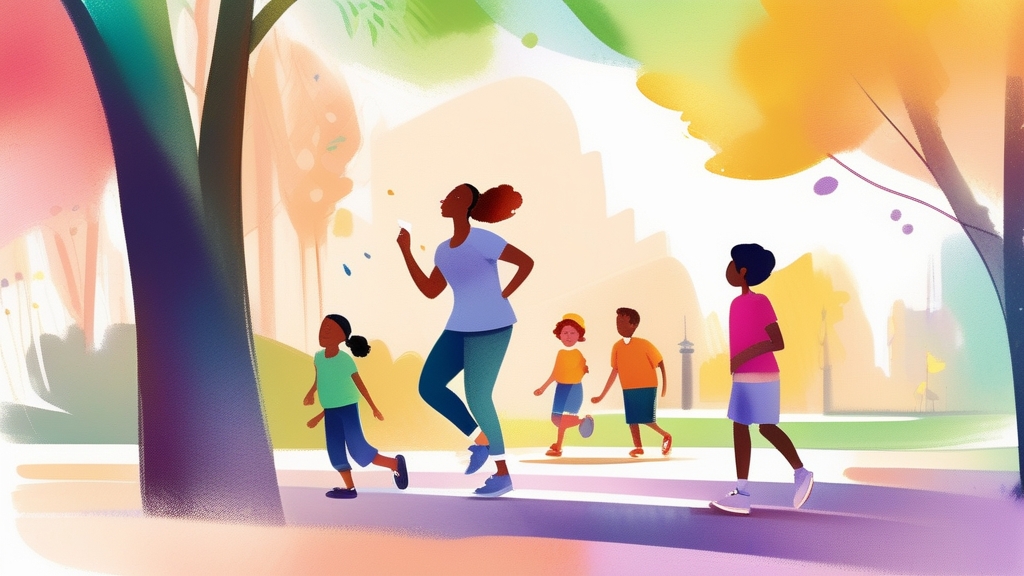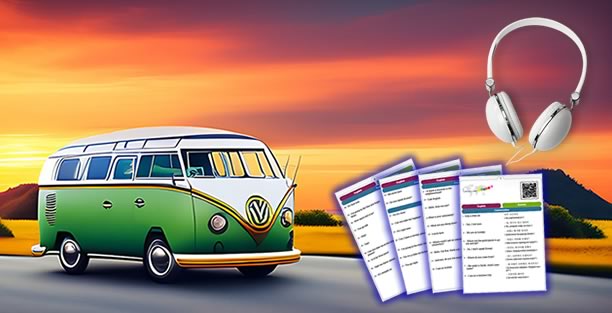Learn Bengali
| English | Bengali | |||
|---|---|---|---|---|
| Hello | হ্যালো | |||
| Hello | আসসালামু আলাইকুম | |||
| Good evening | শুভ সন্ধ্যা | |||
| Goodbye | বিদায় | |||
| Goodbye | খোদা হাফেজ | |||
| See you later | আবার দেখা হবে | |||
| Yes | হ্যাঁ | |||
| No | না | |||
| Excuse me! | মাফ করবেন | |||
| Thanks | ধন্যবাদ | |||
| Thanks a lot | অনেক ধন্যবাদ | |||
| Thank you for your help | আপনার সাহায্যের জন্য ধন্যবাদ | |||
| Thank you for your help | তোমার সাহায্যের জন্য ধন্যবাদ | |||
| You’re welcome | এটি বলতে হবে না | |||
| Okay | ঠিক আছে | |||
| How much is it? | এটার দাম কত? | |||
| Sorry! | দুঃখিত! | |||
| I don't understand | আমি বুঝতে পারছি না | |||
| I get it | আমি এটা বুঝেছি | |||
| I don't know | আমি জানি না | |||
| Forbidden | নিষিদ্ধ | |||
| Excuse me, where are the toilets? | মাফ করবেন, টয়লেটটি কোথায়? | |||
| Happy New Year! | শুভ নববর্ষ! | |||
| Happy Birthday! | শুভ জন্মদিন! | |||
| Happy Holidays! | ছুটির দিনের শুভেচ্ছা! | |||
| Congratulations! | অভিনন্দন! |
Objectives Do you want to learn the basics of Bengali to handle the most common everyday situations in Bangladesh or India? Loecsen offers a structured Bengali course for complete beginners, aligned with the skills expected at the CEFR A1 level. Vocabulary and sentences are selected to reflect real-life situations, such as introducing yourself, asking for help, or understanding simple phrases, following a clear and progressive learning path. There is no complicated method or artificial content here: you focus on what truly matters, with complete sentences, grammar explained through usage, special attention to pronunciation, and modern tools to help you memorize effectively. As a result, in just a few weeks, with 5 to 15 minutes a day, you reach your first A1 language goal and gain practical autonomy from your very first exchanges in Bengali.
Learn Bengali online: a complete beginner’s guide
Bengali (বাংলা – Bangla) is one of the most widely spoken languages in the world, with over 250 million speakers. It is spoken mainly in Bangladesh and in the Indian state of West Bengal, and also by large communities around the world.
Bengali belongs to the Indo-Aryan branch of the Indo-European language family, like Hindi, Urdu, Marathi, or Punjabi. This means that many grammatical ideas and word roots are historically related, even though the script and pronunciation are different.
This Loecsen Bengali course is a free online course for complete beginners. It is designed to help learners understand, read, pronounce, and use Bengali naturally from the very first lessons, using real everyday sentences.
You do not learn Bengali by memorizing abstract grammar rules. You learn it by listening, repeating, recognizing patterns, and reusing real sentences.
Grammar is fully present in the course, but it is introduced through usage: inside sentences, through word-by-word breakdowns, explanations of real context, and even etymological notes when helpful.
History and cultural background of Bengali
Bengali developed from Sanskrit through Prakrit and Apabhraṃśa, evolving over more than a thousand years. It has a very rich literary tradition, from medieval poetry to modern novels, songs, and cinema.
Bengali is strongly associated with:
- Poetry and music (e.g. Rabindranath Tagore)
- Daily spoken warmth and expressiveness
- A clear distinction between polite and familiar speech
This cultural background explains why Bengali often sounds melodic and fluid, with long vowels and smooth consonant transitions.
Understanding Bengali writing: from signs to sounds, from sounds to sentences
At first glance, Bengali writing may look complex or unfamiliar. In reality, it follows a very logical and learnable system once you understand how letters, sounds, and words are built.
This section explains step by step how Bengali writing works — what each sign represents, how sounds are formed, and how complete sentences are read and understood.
You do not learn Bengali writing by memorizing symbols.
You learn it by connecting written forms to sounds inside real sentences.
1. What kind of writing system is Bengali?
Bengali uses an abugida, a writing system where:
- Each consonant already contains a vowel sound
- Other vowels are added using small visual marks
- What you see on the page directly represents how the word is pronounced
This means that Bengali writing is sound-based and predictable. Once you understand how letters combine, you can read new words aloud with confidence.
2. Consonants: the base of every syllable
In Bengali, a consonant is never “empty”. It always carries a basic vowel sound by default.
So when you see:
ka
You are not seeing just a “k”. You are seeing ka.
3. Adding vowels: how sounds change
If you want a different vowel sound, Bengali does not add another letter. Instead, it modifies the consonant with a vowel sign.
Compare these forms:
কি → ki
কা → kā
The consonant ক stays the same. The vowel sound changes depending on the mark attached to it.
Always focus on the whole syllable sound, not on individual strokes.
4. From syllables to words
Words are built by chaining syllables together. Each syllable is clearly visible in the writing.
Example from the Loecsen corpus:
ami – I
This word is made of:
- আ (a)
- মি (mi)
Each part contributes directly to the pronunciation. Nothing is hidden or irregular.
5. Building a full sentence, step by step
Let’s take a complete sentence used in the course:
ami bujhte pārchi nā – I don’t understand
Now let’s see how it is constructed:
- আমি – I
- বুঝতে – to understand
- পারছি – am able to
- না – not
What matters for a beginner is not grammatical labels, but:
- the stable order of elements
- the clear syllable rhythm
- the fact that what you hear matches what you see
6. How Bengali sounds: vowels, rhythm, and flow
Bengali pronunciation is smooth and flowing. The language naturally alternates consonants and vowels, creating a regular rhythm.
- Vowels can be short or long
- Consonants are generally soft
- There are no tones
Listen again to:
ami bujhte pārchi nā
You can clearly hear:
- a steady vowel flow
- a predictable syllable structure
- a natural sentence melody
7. How to learn to read and write Bengali effectively
The goal is not to “know the alphabet” first. The goal is to recognize patterns through usage.
- Listen to the sentence
- Repeat it aloud
- Look at the written form
- Start recognizing syllables automatically
On Loecsen, you can also:
- see phrases broken down word by word
- understand how grammar works through examples
- discover how words are used in context
- learn about word origins when relevant
After repeated exposure, you stop “decoding” letters.
You start recognizing words instantly, just like in your native language.
The Bengali alphabet (with romanization)
Below is a practical reference table for Bengali letters.
| Bengali | Transliteration |
|---|---|
| Vowels | |
| অ | a |
| আ | ā |
| ই | i |
| ঈ | ī |
| উ | u |
| ঊ | ū |
| ঋ | ṛ |
| এ | e |
| ঐ | ai |
| ও | o |
| ঔ | au |
| Consonants | |
| ক | ka |
| খ | kha |
| গ | ga |
| ঘ | gha |
| ঙ | ṅa |
| চ | ca |
| ছ | cha |
| জ | ja |
| ঝ | jha |
| ঞ | ña |
| ট | ṭa |
| ঠ | ṭha |
| ড | ḍa |
| ঢ | ḍha |
| ণ | ṇa |
| ত | ta |
| থ | tha |
| দ | da |
| ধ | dha |
| ন | na |
| প | pa |
| ফ | pha |
| ব | ba |
| ভ | bha |
| ম | ma |
| য | ya |
| র | ra |
| ল | la |
| শ | śa |
| ষ | ṣa |
| স | sa |
| হ | ha |
| ড় | ṛa |
| ঢ় | ṛha |
| য় | ẏa |
| ং | ṁ |
| ঃ | ḥ |
| ঁ | ˜ |
Bengali grammar: understanding how the language really works
Bengali grammar is often described as “complex”. In reality, its core logic is very consistent and becomes clear when grammar is learned inside real sentences, not through abstract rules.
In this course, grammar is not presented as a separate theory. It is embedded directly in usage: every sentence teaches you how Bengali works.
You don’t “study” Bengali grammar.
You recognize patterns by hearing, repeating, and reusing real sentences.
1. Word order: meaning comes from position
Bengali relies heavily on word order to express meaning. The structure is generally:
Example from the Loecsen corpus:
ami ekhāne kāj kori – I work here
- আমি – I
- এখানে – here
- কাজ করি – work (do work)
The sentence is understood by position, not by verb endings. This makes Bengali grammar very stable for beginners.
2. Verbs in Bengali: one core meaning, light and predictable endings
In Bengali, verbs are built in a very clear and learner-friendly way. Each verb has a stable core that carries the meaning, and short endings that adjust smoothly depending on who is speaking.
Let’s take a very frequent verb from the Loecsen corpus:
bujh- – “understand” (core meaning)
This core never changes. You always recognize the idea of “understanding”. Only the ending changes slightly.
Same verb, different subjects
ami bujhi – I understand
tumi bujho – You understand (familiar)
āpni bujhen – You understand (polite)
se bujhe – He / she understands
āmra bujhi – We understand
tārā bujhe – They understand
What matters most:
- The verb core stays identical (বুঝ-)
- The endings are short, regular, and repetitive
- The meaning is always clear from context
You do not memorize verb tables. You learn verbs by hearing the same forms again and again in real sentences until they become familiar.
In practice, learners start recognizing:
- the verb meaning immediately
- the subject from context
- the natural rhythm of the sentence
3. Negation: one word, one position
Negation in Bengali is extremely regular. It is expressed with the particle না (nā), which comes at the end of the verb phrase.
ami jāni nā – I don’t know
ami bujhte pārchi nā – I don’t understand
You do not change the sentence. You simply add না.
Once you know না, you can negate almost anything.
4. Questions: asking without transforming the sentence
In Bengali, questions often keep the same structure as statements. Meaning is created by:
- a question word
- or the context
eṭār dām kôto – How much is it?
Nothing “moves”. You recognize a question by the word কত (“how much”).
5. Politeness: speaking appropriately, not formally
Bengali expresses politeness mainly through pronouns and verb forms. This is essential for sounding natural.
āpni kōthā theke eshechen – Where are you from? (polite)
tumi kōthā theke eshecho – Where are you from? (familiar)
The sentence meaning is the same. The relationship changes.
Use আপনি forms with new people.
They are always respectful and never wrong.
6. Possession and relationships: “my”, “your”, “our”
Possession is expressed very transparently.
āmār nām Sārā – My name is Sarah
āmār bābā – my father
Once you learn আমার (“my”), you can reuse it everywhere.
7. Grammar is everywhere in the course
On Loecsen, grammar is never hidden — but it is never overwhelming. For every word, expression, or sentence, learners can:
- see the sentence broken down word by word
- understand how grammar works through usage
- recognize recurring patterns across lessons
- discover word usage and, when useful, its origin
You don’t memorize rules.
You internalize how Bengali works by repeated exposure to real language.
A practical learning routine with Loecsen
Learning Bengali sustainably relies on simple actions repeated consistently. Loecsen combines audio repetition, contextual usage, and active recall.
- Practice every day, even only 5 minutes.
- Repeat aloud to absorb Bengali rhythm.
- Replay the same expressions until they feel familiar.
- Occasionally write short phrases by hand.
- Reuse known sentences by swapping one word.
- Use listening mode on low-energy days.
- Practice with AI dialogues for real situations.
- Trust Spaced Repetition (SRS) and Super Memory.
Staying motivated when learning Bengali
Feeling uncertain at the beginning is normal — especially with a new script.
- Lower your daily goal instead of stopping.
- Return to familiar sentences.
- Listen only on low-energy days.
- Accept approximation: being understood matters more than perfection.
Frequently asked questions about learning Bengali
Is Bengali difficult for beginners?
Bengali looks complex at first because of its script, but pronunciation and grammar are very regular when learned through usage.
Can I learn Bengali online by myself?
Yes. With structured listening, repetition, and contextual explanations, Bengali can be learned autonomously.
Do I need to master grammar rules?
No. Grammar is absorbed naturally through repeated exposure to real sentences.
How long before I understand basic Bengali?
With regular practice, learners begin understanding everyday sentences within a few weeks.





